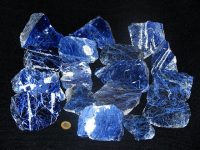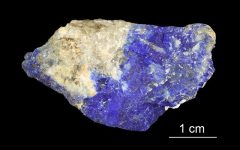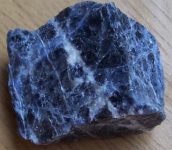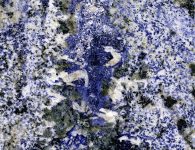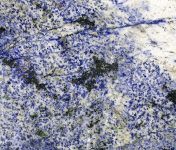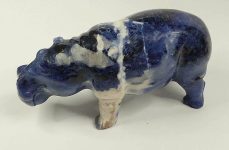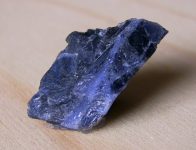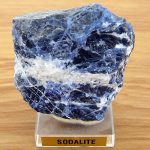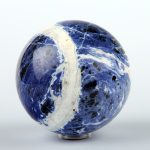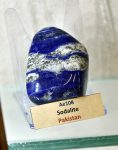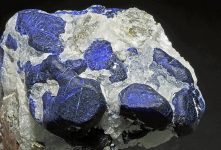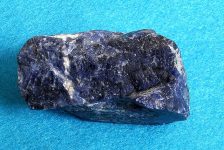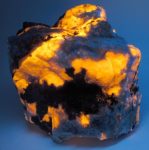Sodalite
ABOUT SODALITE
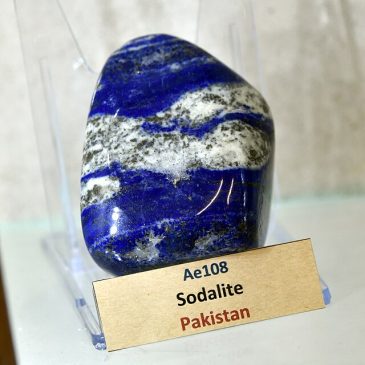
Sodalite is a striking blue mineral that is valued for its vivid coloration and unique veining. Known for its calming properties and used extensively in jewelry and decorative objects, sodalite has captured human interest since its discovery
Mining: Sodalite is extracted through conventional mining methods. It is often found as a secondary mineral in large, massive deposits rather than in easily accessible crystal forms.
Processing: Once mined, sodalite is cleaned, cut, and polished to enhance its natural beauty. It is often shaped into smooth, rounded forms to highlight its vibrant blue color and veining.
CHARACTERISTICS
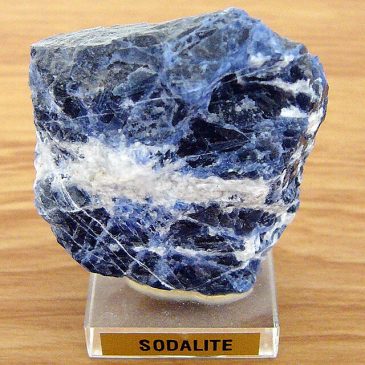
Color: Sodalite is most commonly deep blue, but it can also be found in shades of light blue, gray, white, green, and even yellow. It often features white veining or patches.
Chemical Composition: Sodalite has the chemical formula Na₈(Al₆Si₆O₂₄)Cl₂, indicating it is a sodium aluminum silicate with chloride.
Density: The density of sodalite is about 2.27-2.33 g/cm³.
Crystal Structure: Sodalite crystallizes in the cubic system, forming dodecahedral or massive granular crystals.
Luster: Sodalite exhibits a vitreous to greasy luster.
Hardness: Sodalite has a Mohs hardness of 5.5-6, making it moderately hard but still susceptible to scratching.
Transparency: Sodalite is generally opaque but can be translucent in thinner sections.
HISTORY AND LORE
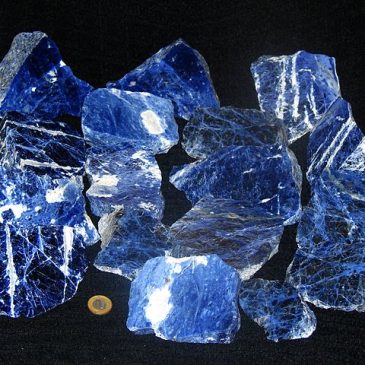
Discovery and Naming: Sodalite was first discovered in Greenland in 1811 and named for its high sodium content.
Cultural Significance: While sodalite has no extensive ancient history due to its relatively recent discovery, it quickly became popular in the 19th and 20th centuries for use in jewelry and ornamental objects.
Modern Use: Today, sodalite is widely appreciated for its aesthetic appeal and is a favorite in both gem collections and metaphysical practices.
SOURCES
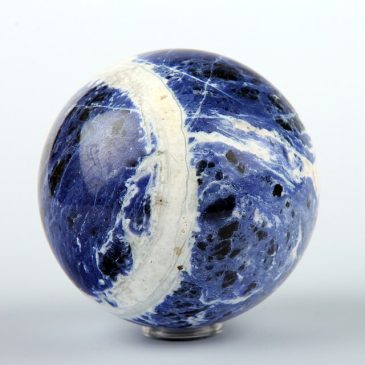
Geographical Locations: Major sources of sodalite include Brazil, Canada (particularly Ontario), Namibia, Russia, India, and the United States.
Geological Formation: Sodalite forms in igneous rocks such as nepheline syenites and phonolites, typically through the crystallization of magma.
USES
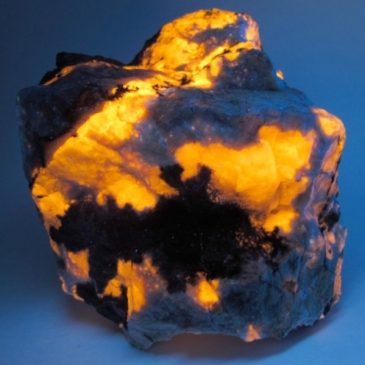
Jewelry: Sodalite is used in jewelry, often cut into cabochons, beads, and pendants. Its rich blue color and distinctive veining make it a popular choice.
Decorative Objects: Sodalite is crafted into various decorative items, including vases, bowls, spheres, and carvings. Its unique appearance adds a touch of elegance and natural beauty to home decor.
Metaphysical Properties: In metaphysical circles, sodalite is believed to promote emotional balance, clarity, and truth. It is often used in meditation and healing practices.
METAPHYSICAL PROPERTIES
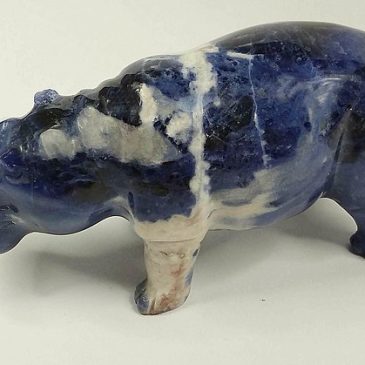
Symbol of Clarity and Truth: Sodalite is often associated with mental clarity, truth, and rationality. Its deep blue color is linked to the throat chakra, which is believed to enhance communication and expression.
Historical Significance: The use of sodalite in modern jewelry and decorative arts highlights its cultural significance as a symbol of beauty and tranquility.
